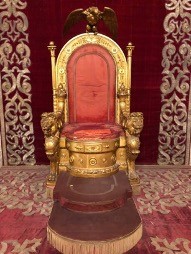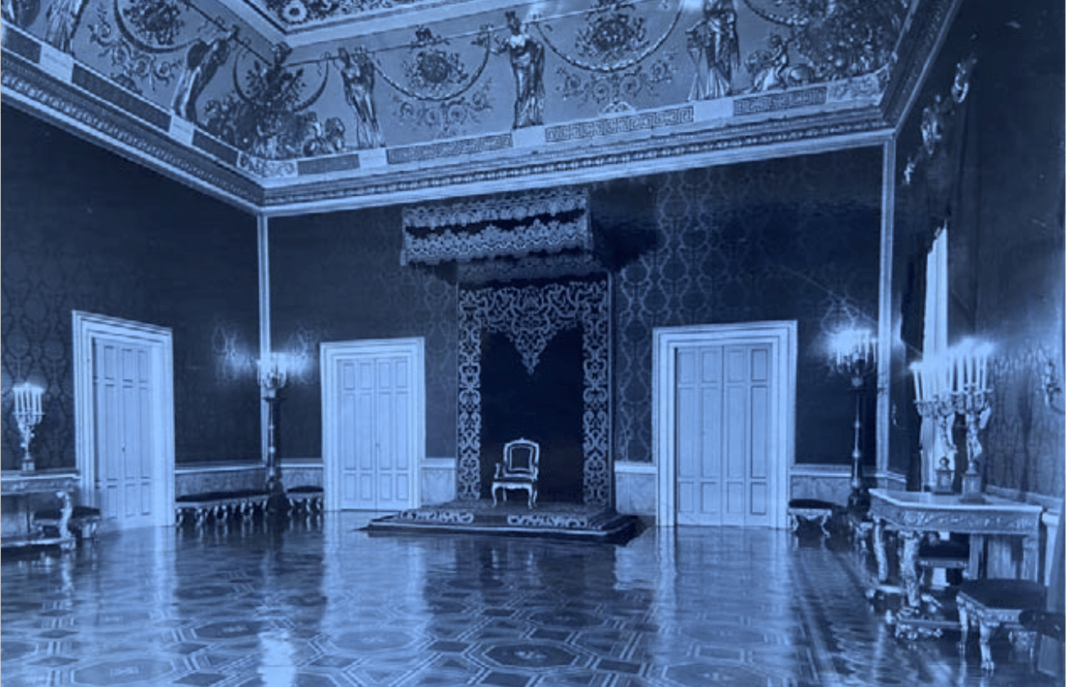Il trono del Palazzo Reale di Napoli rivivrà di nuova luce. Grazie al progetto “Restituzioni”, un programma biennale di restauri di opere d’arte appartenenti al patrimonio culturale italiano, promosso e curato da Intesa Sanpaolo.
Dal 1989 si individuano, infatti, in tutta Italia, in collaborazione con il Ministero della cultura, opere bisognose di restauro, sostenendo gli interventi al fine di recuperare beni rappresentativi della varietà del patrimonio storico-artistico italiano, sia in termini cronologici sia in termini di materiali e tecniche.
I lavori saranno affidati alla Fondazione Centro per la conservazione e il restauro dei beni culturali “La Venaria Reale” e inizieranno a metà settembre: giovedì 12 il trono sarà trasportato a Torino, dove verranno restaurate sia la parte lignea sia la tappezzeria.
Il complesso restauro, che durerà quasi un anno e inizierà con un piano diagnostico, supportato da indagini radiografiche e microscopiche, al quale seguiranno la disinfestazione della parte lignea, il consolidamento della struttura, la pulitura con integrazioni materiche e cromatiche, concludendo con lo smontaggio e trattamento dei tessuti e delle passamanerie.
Nel frattempo, a Palazzo Reale, il trono sarà sostituito temporaneamente dalla seduta del ‘700 che appartenne ai Borboni e sarà installato nella sala un monitor per trasmettere video e clip che documenteranno il restauro e le attività in corso d’opera. Al termine del restauro, previsto alla fine dell’estate del 2025, sarà esposto nella mostra temporanea dedicata al progetto “Restituzioni” e tornerà a Napoli nel mese di febbraio del 2026.
La preziosa poltrona di manifattura napoletana fu realizzata intorno alla metà dell’Ottocento in legno intagliato e dorato con rivestimento in velluto color cremisi e un gallone metallico con frange di seta. Sui lati sono presenti due braccioli con teste leonine; dopo l’Unità d’Italia fu aggiunto lo stemma sabaudo sul petto dell’aquila posta in cima allo schienale. Il trono è protetto da un baldacchino in velluto cremisi e galloni argentati, ornato con nastri intrecciati, e si appoggia su un tappeto finemente decorato.

di Palazzo Reale
Intesa San Paolo/ The throne of the Royal Palace will be revived in a new light. From September 12th, the restoration
The throne of the Royal Palace in Naples will live again in a new light. Thanks to the “Restituzioni” project, a two-year program to restore works of art that are part of Italy’s cultural heritage, promoted and curated by Intesa Sanpaolo.
Since 1989, in collaboration with the Ministry of Culture, works in need of restoration have been identified throughout Italy, with the aim of recovering objects that are representative of the diversity of Italy’s historical-artistic heritage, both in terms of chronology and in terms of materials and techniques.
The work will be entrusted to the Fondazione Centro per la conservazione e il restauro dei beni culturali “La Venaria Reale” and will begin in mid-September: on Thursday 12th the throne will be transported to Turin, where both the wooden part and the upholstery will be restored.
The elaborate restoration, which will last almost a year, will begin with a diagnostic plan, supported by radiographic and microscopic studies, followed by the disinfestation of the wooden part, the consolidation of the structure, the cleaning with textural and chromatic additions, and finally the dismantling and treatment of the fabrics and trimmings.
Meanwhile, in the Royal Palace, the throne will be temporarily replaced by the 18th century Bourbon throne, and a monitor will be installed in the room to broadcast videos and clips documenting the restoration and ongoing activities.
At the end of the restoration, expected in the late summer of 2025, it will be displayed in the temporary exhibition dedicated to the “Restitutions” project and will return to Naples in February 2026.
The precious armchair of Neapolitan manufacture was made around the mid-19th century in carved and gilded wood with crimson velvet upholstery and a metal chevron with silk tassels. On the sides are two armrests with lion heads; after the Unification of Italy, the Savoy coat of arms was added on the breast of the eagle on the backrest. The throne is protected by a canopy of crimson velvet and silver chevrons decorated with woven ribbons and rests on a finely decorated carpet.
—









